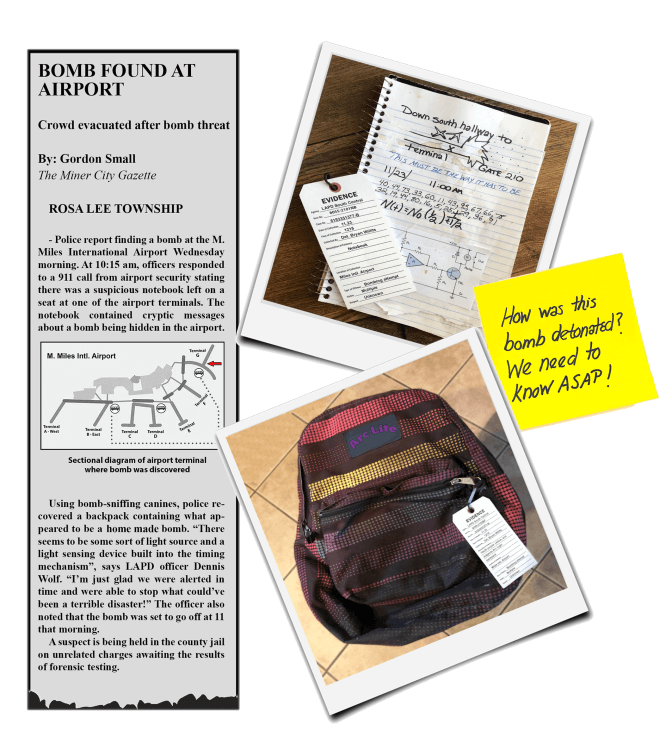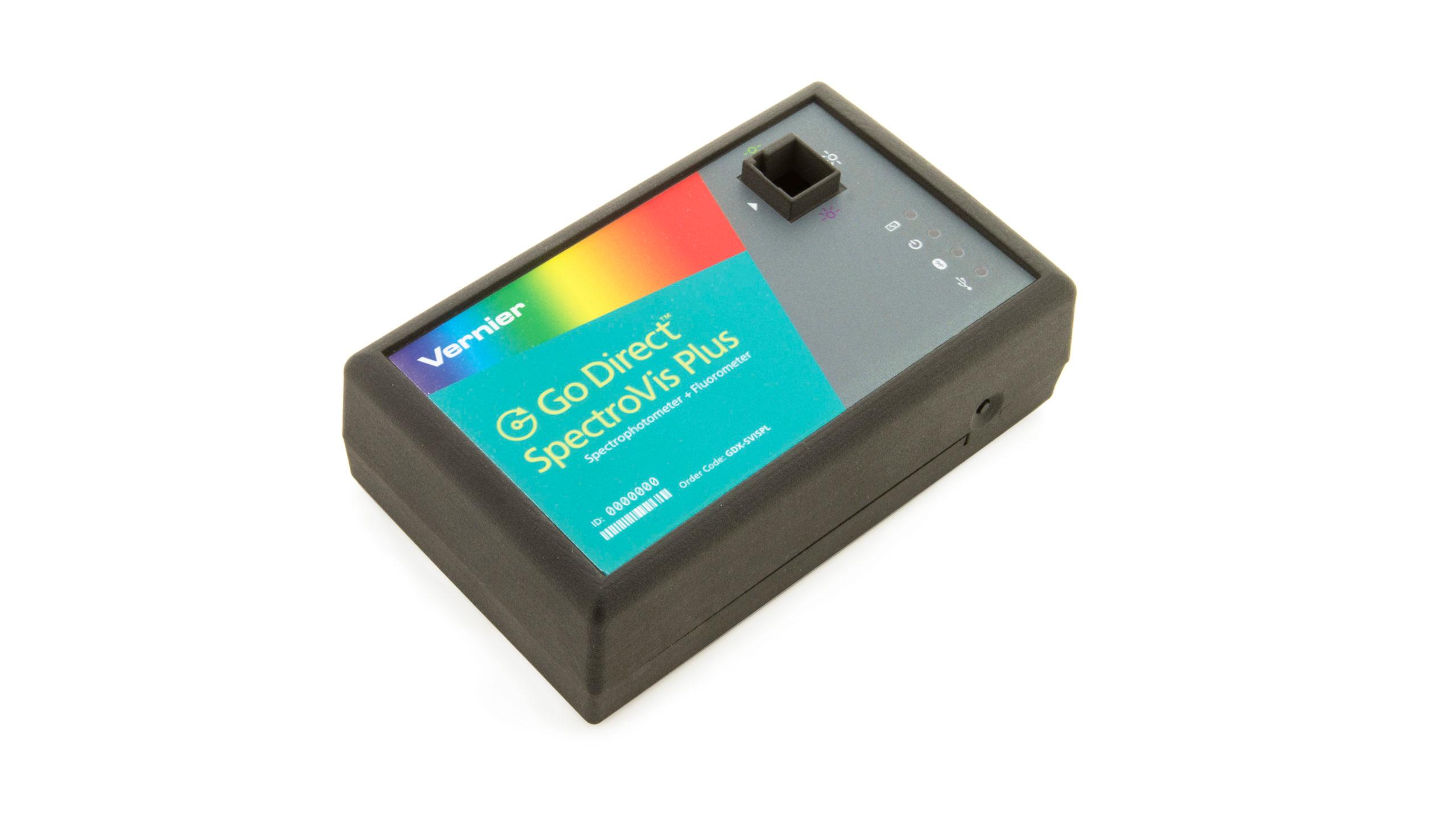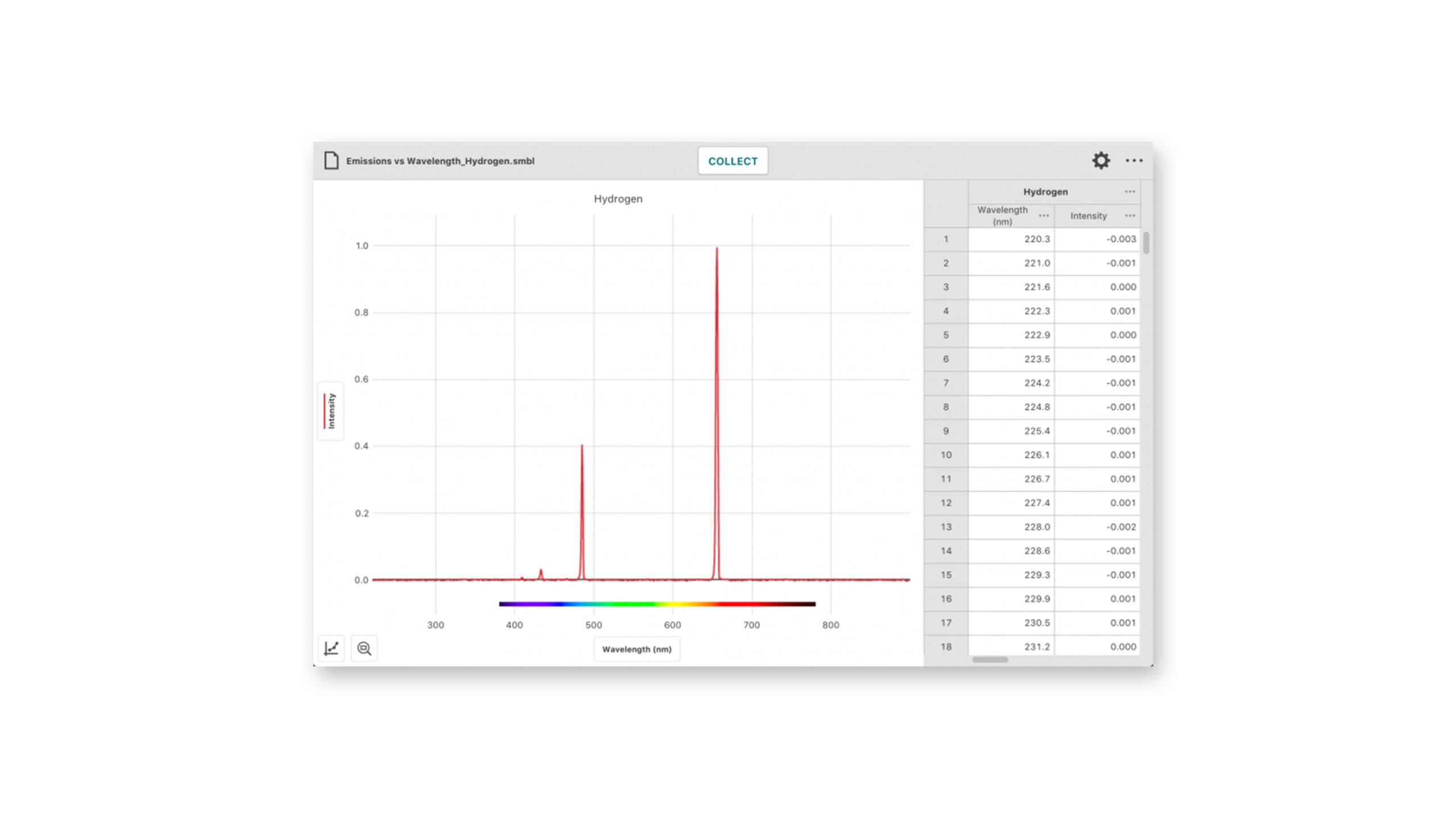Color Countdown Timer (Spectrophotometer)
Experiment #7A from Forensic Chemistry Experiments
- Subject
- Chemistry

Introduction
Detectives need your help with understanding how this chemical reaction works as a timer. There was a food dye and bleach solution recovered from the backpack in the airport terminal. How can these be used as a timer?
In Part I you will measure the absorbance of a food dye solution at different wavelengths and identify the wavelength of maximum absorbance, λmax.
In Part II you will collect data observing the reaction between the food dye and bleach, using the wavelength you determined in Part I. Common bleaches contain sodium hypochlorite, NaClO. In solution, this ionic compound dissociates to form sodium ion, Na+, and hypochlorite ion, ClO–.
Objectives
- Apply scientific principles and evidence to provide an explanation about the effect of blue food dye concentration on the rate of reaction between bleach and food dye.
- Analyze and interpret absorbance spectra to identify the wavelengths of maximum absorbance for blue food dye.
- Use mathematical representations to determine the rate constant for the reaction between blue food dye and bleach and the half-life of the reaction.
- Communicate technical information about the process used to identify the rate of change of blue food dye concentration using absorbance data.
- Write a Case Report to help detectives present the case in court.
Sensors and Equipment
This experiment features the following sensors and equipment. Additional equipment may be required.
Correlations
Teaching to an educational standard? This experiment supports the standards below.
- International Baccalaureate (IB) 2025/Chemistry
- Reactivity 2.2.1—The rate of reaction is expressed as the change in concentration of a particular reactant/product per unit time.
Ready to Experiment?
Ask an Expert
Get answers to your questions about how to teach this experiment with our support team.
- Call toll-free: 888-837-6437
- Chat with Us
- Email support@vernier.com
Purchase the Lab Book
This experiment is #7A of Forensic Chemistry Experiments. The experiment in the book includes student instructions as well as instructor information for set up, helpful hints, and sample graphs and data.



